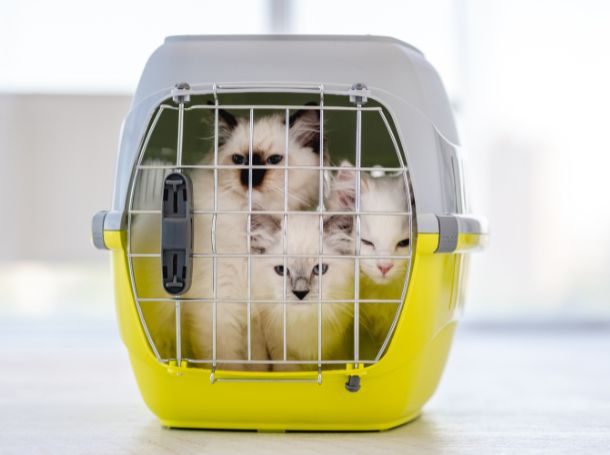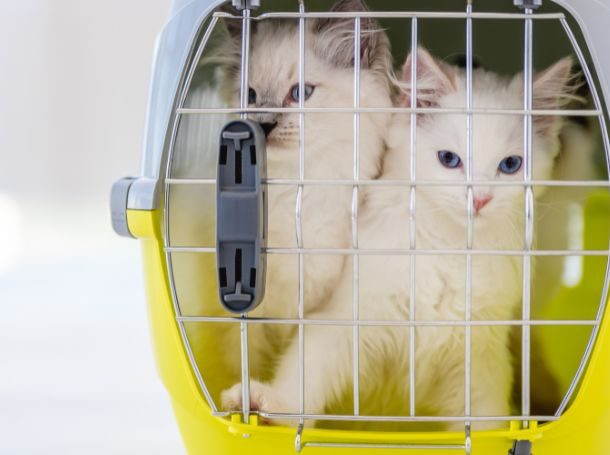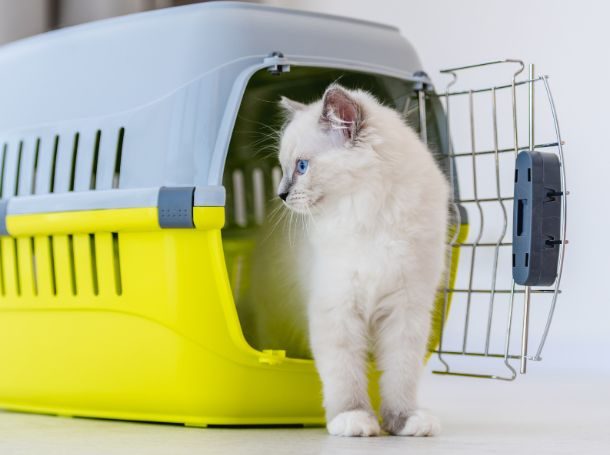
Complete Puppy Crate Training Schedule: A Step-by-Step Guide
- March 15, 2025
Table of Contents
Crate training your puppy is an essential skill that helps build a foundation for behavioral and house training. A well-designed puppy crate training schedule can ease your dog’s transition into a new home, teach proper behavior, and give it a safe space of its own.
In this comprehensive guide, we’ll take you through everything you need to know about setting up a crate training schedule for your puppy, including when to start, how to create an ideal routine, common mistakes to avoid, and the benefits of crate training.
What is Crate Training and Why Is It Important?
Crate training involves teaching your puppy to accept spending time in a crate as a positive experience. This can be a highly effective way to house train your puppy, prevent destructive behavior when unsupervised, and provide a safe and secure space for your dog. It’s important to understand that a crate should not be seen as a form of punishment. Rather, it should be a space that offers comfort and security.
The Psychological Benefits of Crate Training
-
Safety and Security:
Puppies feel safe when they are given their own space. Crates mimic a den-like environment, providing a retreat from the hustle and bustle of the home. This is especially beneficial for puppies who may feel anxious or overwhelmed by unfamiliar situations. -
Creates Positive Associations:
With proper crate training, puppies can associate their crate with positive things like treats, meals, and comfort. Over time, they will voluntarily seek out their crate for rest. -
Helps with Housebreaking:
Crate training plays a key role in housebreaking because puppies are unlikely to soil their sleeping area. This helps them develop a consistent potty routine.
Why You Should Start Crate Training Early
Starting crate training at an early age gives your puppy the chance to learn good habits and reduces the likelihood of behavioral issues later on. The earlier you start, the more likely your puppy will view their crate as a positive place. It’s also an excellent time to establish a daily routine that supports their physical and mental health.
When to Start Crate Training Your Puppy?
One of the first questions many new dog owners have is, “When should I start crate training my puppy?” The right answer depends on your puppy’s age, but it’s best to begin as soon as you bring them home.
The Ideal Time to Start
-
8 Weeks:
Puppies are typically ready to begin crate training around 8 weeks of age. At this stage, they are still learning basic behaviors but can understand the concept of crate training with patience and consistency. -
Under 8 Weeks:
If you get a puppy younger than 8 weeks, they might not yet be developmentally ready for crate training. At this age, you can start familiarizing your puppy with the crate and introduce them to short periods of time in it.
It’s important to ensure your puppy’s comfort and security in the crate, so gradually build up the time they spend in it, starting with short increments and working up as they become more accustomed.
How to Create a Puppy Crate Training Schedule?

Establishing a puppy crate training schedule is essential for success. Consistency is key to ensuring that your puppy becomes comfortable with the crate and learns how to follow a daily routine. Below is a comprehensive breakdown of how to create a balanced, effective schedule:
Morning Routine
-
6:30 AM - 7:00 AM: Wake Up and Potty Break
Start your day by letting your puppy out of their crate for a potty break. Puppies need to go outside as soon as they wake up to prevent accidents. This is also an ideal time to reinforce housebreaking. -
7:00 AM - 7:30 AM: Breakfast
Feed your puppy breakfast and let them enjoy their meal. Make sure to use high-quality food that supports their growth. After the meal, take them outside for another potty break. -
7:30 AM - 9:00 AM: Crate Time
After breakfast, put your puppy back in the crate for a brief rest period. Puppies need a lot of sleep, especially at a young age. This crate time is essential to teach them to relax and rest in their safe space.
Mid-Morning
-
9:00 AM - 9:30 AM: Potty Break and Playtime
After crate time, take your puppy outside for another potty break. Use this time to reinforce the potty routine. Follow the potty break with a short play session or training session. -
9:30 AM - 11:00 AM: Crate Time
Another short period of crate time will help reinforce the idea that the crate is a safe place to relax. Make sure that the crate is in a quiet area, away from distractions.
Afternoon Routine
-
12:00 PM - 12:30 PM: Lunch
Feed your puppy their lunch. As always, follow up with a potty break immediately after eating. This helps establish a consistent potty routine and helps avoid accidents in the crate. -
12:30 PM - 2:00 PM: Crate Time
This is another session of crate time, especially for younger puppies who need several naps throughout the day. Puppies are still developing, and regular rest is essential for their well-being.
Evening Routine
-
4:00 PM - 5:00 PM: Potty Break and Play
By late afternoon, it’s time for some active play and another potty break. Use this time to reinforce basic commands and play to build a bond with your puppy. -
5:00 PM - 5:30 PM: Dinner
Feed your puppy dinner, and once again, take them outside after eating to establish a good potty routine. -
6:00 PM - 8:00 PM: Crate Time
Before bedtime, place your puppy in the crate for a couple of hours. This will help them wind down and prepare for a restful night.
How Long Should a Puppy Stay in a Crate?

Understanding the ideal duration for your puppy to stay in the crate is crucial. Puppies, especially young ones, should not be crated for too long, as they need regular breaks, exercise, and socialization. Here is a guide on how long your puppy can stay in their crate:
Duration Based on Age
-
8 to 12 Weeks:
At this age, your puppy can only hold their bladder for around 1-2 hours. Crate time should be kept short, and you should take them outside for potty breaks frequently. -
3 to 6 Months:
Puppies in this range can hold their bladder for 3-4 hours, so you can extend their crate time a bit longer. -
6 Months and Older:
By now, your puppy can likely hold their bladder for 5-6 hours. However, it's important to avoid keeping them in the crate for long periods regularly.
Remember that crate time should always be followed by a potty break, exercise, or playtime.
Common Puppy Crate Training Mistakes to Avoid
Even with a well-structured puppy crate training schedule, there are a few common mistakes that can derail your training efforts. Here’s a list of the most frequent errors and how to avoid them:
1. Using the Crate as Punishment
Never use the crate as a punishment tool. If your puppy starts associating their crate with negative experiences, they may develop a fear of the crate, making it harder to crate train them.
2. Crating for Too Long
Puppies need regular breaks to play, potty, and stretch. Crating your puppy for too long can lead to anxiety, boredom, and even destructive behaviors. Keep crate sessions short and provide plenty of mental and physical stimulation.
3. Rushing the Process
Crate training takes time and patience. Avoid rushing your puppy’s progress. Start with short periods of crate time and gradually extend them as your puppy becomes more comfortable.
4. Not Creating Positive Associations
It’s essential that your puppy associates the crate with positive experiences, such as receiving treats, enjoying meals, and having toys. If your puppy sees the crate as a place of comfort and safety, they will be more likely to enjoy spending time there.
5. Lack of Consistency
Crate training needs consistency. Use the crate as part of your daily routine and stick to the schedule. Puppies thrive on routine, so make sure they have a predictable, regular crate schedule.
Benefits of Puppy Crate Training

Aside from helping with potty training, crate training offers numerous benefits that contribute to the overall development of your puppy:
1. Safety and Protection
A crate offers a safe place for your puppy when you’re away from home or when you can’t supervise them. This keeps them from potentially ingesting harmful substances or engaging in dangerous behaviors like chewing electrical cords.
2. Reduces Anxiety
Puppies that are crate trained from an early age are often less anxious when left alone. The crate becomes a source of comfort, and they learn that being left alone is not a cause for stress.
3. Assists with Travel
A crate is a useful tool for travel. Whether you’re taking your puppy to the vet, a dog park, or on vacation, the crate serves as a safe and familiar space for them during transit.
4. Encourages Independence
A properly crate-trained puppy learns to be more independent. They understand that it’s okay to spend time alone, which builds confidence and reduces separation anxiety.
Conclusion: Mastering Puppy Crate Training
A successful puppy crate training schedule involves much more than simply putting your dog in a crate. It requires patience, consistency, and positive reinforcement. By starting early, gradually building up the crate time, and following a structured routine, you’ll not only help your puppy feel safe and secure, but you’ll also create the foundation for a well-behaved, happy dog. Remember, crate training is a long-term commitment, but with the right approach, you can create a positive and lasting bond with your puppy.
By understanding your puppy’s needs, avoiding common mistakes, and sticking to a consistent schedule, crate training will become an invaluable tool in helping both you and your puppy thrive together.
Frequently Asked Questions about Puppy Crate Training
Puppies may initially cry when placed in a crate. It’s important not to give in and let them out immediately, as this reinforces the behavior. Allow your puppy to settle down on their own and provide comfort with toys or treats. Gradually increase crate time to help them adjust.
Overnight crating is usually fine for puppies that are old enough to hold their bladder through the night. Be sure to let them out before bed and again in the morning.
Covering the crate with a blanket or crate cover can create a cozier environment and help your puppy feel more secure. However, make sure there is adequate airflow to prevent overheating.




Leave a comment